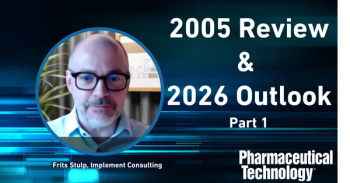
- Pharmaceutical Technology-07-02-2017
- Volume 41
- Issue 7
FDA Continues to Promote Quality Drug Production
CDER’s Janet Woodcock endorses modern drug manufacturing to ensure access to safe and reliable medicines.
As pharmaceutical manufacturing became more scientific and complex during the second half of the 20th Century, the government’s role in setting standards and regulating the testing and development of medicines and vaccines expanded and evolved. As with many government programs, public health crises involving contaminated vaccines and deadly elixirs spurred demands for more effective oversight. The thalidomide tragedy of the 1960s led to legislation to better ensure the safety and effectiveness of drugs and biologics, establishing new rules for drug marketing and current good manufacturing practices (cGMPs) and expanding FDA in the process.
Through the following decades, Congress further strengthened oversight of over-the-counter drugs and medical devices. The Orphan Drug Act of 1983 created incentives for developing treatments for rare diseases. The landmark Hatch-Waxman Act of 1984 established a pathway for abbreviated testing and efficient approval of less costly generic drugs. Meanwhile, the AIDS epidemic pressured FDA officials in 1988 to facilitate access to, and accelerate the development and approval of, experimental therapies for patients with serious, life-threatening diseases without available treatment.
FDA had some 7300 staffers in 1977, approximately 1000 involved in drug regulation, when Pharmaceutical Technology magazine began to report on the technical, scientific, and regulatory issues shaping modern drug development and production. Today, FDA’s staff nears 17,000, about 5000 in the Center for Drug Evaluation and Research (CDER) and 1400 in the Center for Biologics Evaluation and Research (CBER). Much of this expansion has been supported by industry-paid user fees, which were first authorized by the Prescription Drug User Fee Act (PDUFA) of 1992 to enhance FDA’s ability to process drug applications more efficiently-and to reduce the lag between when new drugs came to market in the United States compared to Europe.
FDA drug regulatory policies continued to evolve under CDER Director Janet Woodcock, who took the helm in 1994 and has led the center since then, except during a 2005-2008 stint in the FDA Commissioner’s office. She followed CDER’s first director, clinical pharmacologist Carl Peck, who came to the new center in 1987 in time to deal with the generic-drug scandal that rocked the agency and with the challenges in overseeing development of new therapies for AIDS and other critical diseases.
During the 1990s, Congress and FDA set new policies for dietary supplements, incentives for developing medicines for children, expanded safeguards and information for participants in clinical trials, more leeway for drug advertising and communications, streamlined oversight of combination products, and the development of countermeasures to biological and chemical attacks, among other key initiatives. Serious side effects from widely used pain therapies in 2004 led to expanded oversight of drug safety and adverse events.
Emphasizing quality
A main initiative for Woodcock has been to encourage industry adoption of modern manufacturing systems that can reliably produce high quality medicines. Through the 1900s, Woodcock recalled in a recent interview with Pharmaceutical Technology, not much changed in pharmaceutical manufacturing, as companies continued to use basic pharmaceutical compounding processes, scaled up. She was concerned that FDA policies discouraged change, where existing operations met established requirements.
But a more efficient drug-approval process demanded by the drug user fee program, along with surging applications for generic drugs, prompted further CDER reorganization. The Office of Pharmaceutical Science (OPS) was established in 1995 to better oversee the quality aspects of prescription drugs, providing a home for the chemists, pharmacologists, and other staffers involved with evaluating the chemistry, manufacturing, and controls sections of applications for new drugs and generics.
This new structure was helpful when CDER assumed responsibility in 2003 for regulating the growing volume of monoclonal antibodies and therapeutic proteins overseen by CBER. The shift aimed to reduce differences in review processes for drugs and biotech therapies, while also enhancing CBER’s ability to address important public health issues related to vaccines, blood supply, and gene therapies and cellular products, which now are emerging as vital cutting-edge therapies. OPS created a new Office of Biotechnology Products to assess manufacturing and quality issues, now including biosimilars.
Meanwhile, Woodcock continued to press for manufacturing-related changes in FDA regulations, launching the Pharmaceutical Quality for the 21st Century initiative in 2002 to update cGMP guidance documents and to apply risk-based approaches to regulation and inspections. The program encouraged manufacturers to adopt integrated quality systems and online technologies that support continuous manufacturing under a science-based process analytical technology (PAT) initiative. CDER sought closer collaboration with standards setting organizations and the International Council for Harmonization (ICH) to establish global standards for drug testing and production, leading to important ICH guidelines on quality risk management.
Despite these efforts, serious problems in manufacturing processes and in drug quality continued to plague the pharmaceutical industry, often leading to plant closures, product recalls, and drug shortages that compromised patient care. Patient deaths linked to contaminated heparin from China in 2008 and the fungal meningitis outbreak of 2012 caused by faulty large-scale compounding of common injectables, led to legislation expanding FDA oversight of pharmacy compounding and establishing a framework for a global identification and track-and-trace system for pharmaceutical ingredients and finished products by 2023.
A more streamlined and efficient field inspection program for drug manufacturing facilities has been a related goal, particularly as the international pharmaceutical pipeline has taxed field inspection operations. After years of effort, FDA now is implementing a more risk-based inspection model that equates the frequency and scope of facility inspections with a range of factors related to plant operations and produce characteristics. The agency’s Program Alignment initiative similarly aims to better target inspections by FDA’s field force to high-risk situations, working with a specialized pharmaceutical inspectorate to gain added expertise in evaluating targeted sites. FDA officials also are advancing mutual reliance agreements with competent regulatory authorities in Europe and other regions to establish common standards for pharmaceutical inspections and reduce the need for every agency to conduct its own, often redundant, site visits.
Worth the investment
These initiatives now are being implemented by CDER’s Office of Pharmaceutical Quality (OPQ), established in January 2015 to further improve the management of ever-increasing generic-drug applications and thousands of manufacturing supplements, to better coordinate center and field inspection activities, and to promote industry investment in robust quality systems and modern manufacturing technology. Woodcock sees more biopharma companies adopting newer technologies in the commercial production space, moves that she considers particularly suited to generic-drug makers, where “more automated continuous methods have a high probability of getting it right the first time.”
The value of modern manufacturing methods is particularly apparent with breakthrough drugs and other highly innovative products designed for very small patient populations, Woodcock points out. The fairly new breakthrough designation program has been highly successful, but in multiple situations, she has found that “manufacturing is a rate limiting step” in bringing vital new therapies to patients quickly. Similarly, efficient development of much-anticipated biosimilars requires cutting-edge production systems. In the past, efficient manufacturing scale-up was not that important because clinical development took so long, Woodcock observes. But today, she adds, “breakthrough has shown that time is money.”
Woodcock hopes that such developments will encourage more pharma companies to adopt production systems that may be smaller and more agile as well as more reliable. Such approaches may be helpful in implementing changes over a product’s lifecycle and reducing the volume of manufacturing supplements filed with FDA every year.
Even though changes in drug production systems require considerable upfront capital investment, the significant advantages in being able to make high-quality products more reliably and at lower cost should be worth the outlay, Woodcock observes. By avoiding recalls and line shutdowns, more efficient manufacturing should be seen as a competitive advantage, and those who make the investment first, she says, “will be far out in front of the curve.”
Article Details
Pharmaceutical Technology
Vol. 41, No. 7
Pages: 20–24
Citation
When referring to this article, please cite it as J. Wechsler, “FDA Continues to Promote Quality Drug Production,” Pharmaceutical Technology 41 (7) 2017.
Articles in this issue
over 8 years ago
Packaging Improves Medication Adherenceover 8 years ago
The New World of Biopharmaceutical Manufacturingover 8 years ago
Forty Years of Drug Product Manufacturing Advancesover 8 years ago
Advances in Analytical Testing Tools for the Bio/Pharma Industryover 8 years ago
Ribbon Blenders for Specialty Applicationsover 8 years ago
Coating Module Supports Easy Module Exchangeover 8 years ago
Dissolution Tester Eliminates Water Bathover 8 years ago
Bioreactor Family Includes Single-Use BagsNewsletter
Get the essential updates shaping the future of pharma manufacturing and compliance—subscribe today to Pharmaceutical Technology and never miss a breakthrough.




